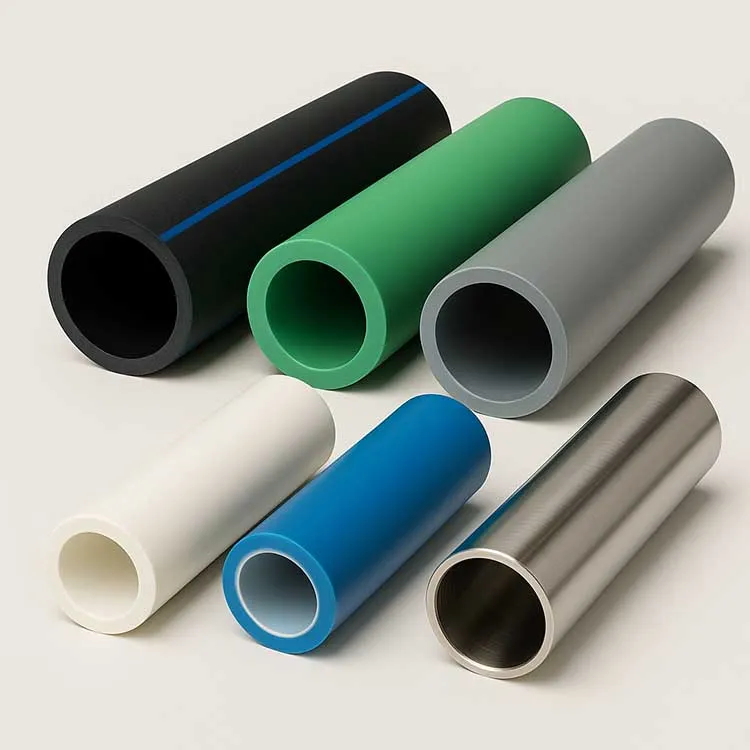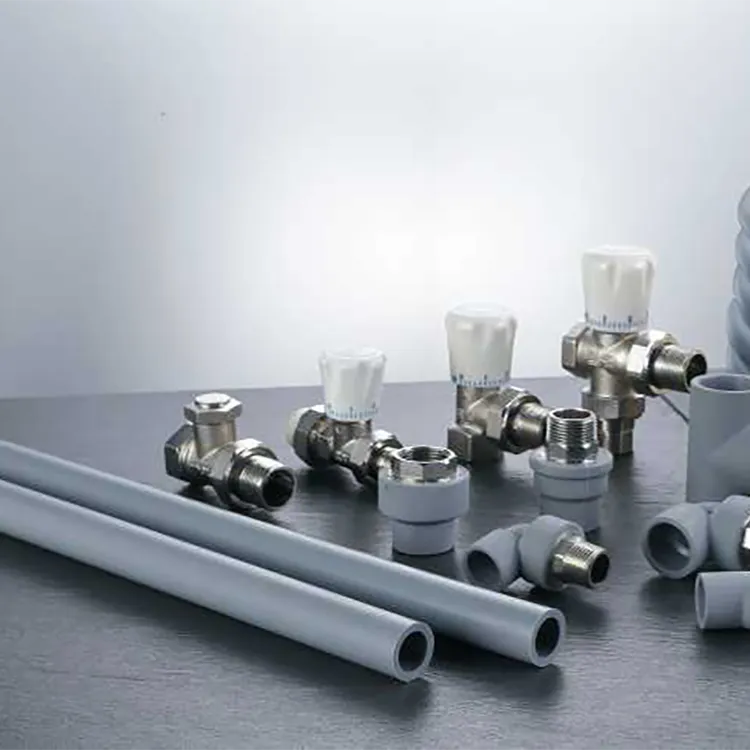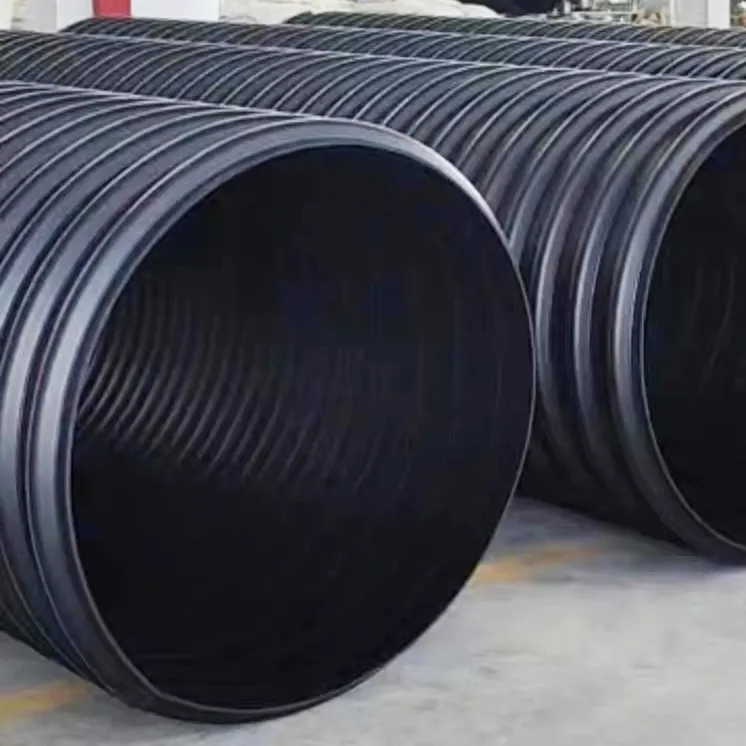Advantages
The use of HDPE (High-Density Polyethylene) electrofusion couplings in the oil and gas industry offers several compelling advantages that make them a preferred choice for various applications. These advantages stem from the unique properties of HDPE and the electrofusion welding process. Here's why HDPE electrofusion couplings are widely used in the oil and gas sector:
1. Corrosion Resistance
Corrosion is a major concern in the oil and gas industry, as it can compromise the structural integrity of pipelines and equipment. HDPE is inherently resistant to corrosion from chemicals, moisture, and environmental factors, making it an ideal material for use in aggressive oil and gas environments. Electrofusion couplings made from HDPE provide a durable and corrosion-resistant solution that extends the service life of pipelines.
2. Leak-Free Joints
Electrofusion welding creates a seamless and leak-free joint between HDPE pipes and fittings. The fusion process involves melting the HDPE material at the joint using controlled electric current. This results in a strong molecular bond between the materials, eliminating the risk of leaks and ensuring a secure connection. Leak-free joints are critical in the oil and gas industry to prevent costly and potentially hazardous leaks.
3. Chemical Resistance
HDPE exhibits excellent resistance to a wide range of chemicals, including hydrocarbons, solvents, and corrosive substances commonly found in oil and gas operations. This chemical resistance ensures that HDPE electrofusion couplings maintain their integrity and functionality even when exposed to aggressive fluids, reducing the risk of material degradation and failure.
4. Durability and Impact Resistance
HDPE is known for its exceptional durability and impact resistance. This property is essential in the oil and gas industry, where pipelines may encounter external forces, vibrations, and impacts from equipment. HDPE pipes and couplings can withstand these challenges without compromising their structural integrity, reducing the likelihood of costly repairs and downtime.
5. Flexibility and Ease of Installation
HDPE pipes and electrofusion couplings are lightweight and flexible, allowing for easy installation, even in challenging terrains. The electrofusion welding process is straightforward and efficient, requiring minimal equipment and training. This ease of installation translates to reduced labor costs and shorter project timelines, contributing to overall operational efficiency.
6. Reduced Maintenance and Downtime
The durability and reliability of HDPE electrofusion couplings result in reduced maintenance requirements and downtime. HDPE's resistance to corrosion and chemicals minimizes the need for frequent inspections and repairs, enhancing the overall reliability of oil and gas infrastructure.
7. Environmental Benefits
HDPE is an environmentally friendly material. It is recyclable, requires fewer natural resources for production compared to traditional materials, and does not release harmful substances into the environment. Using HDPE electrofusion couplings contributes to more sustainable oil and gas operations by reducing the industry's environmental footprint.
8. Versatility
HDPE electrofusion couplings are suitable for a wide range of applications within the oil and gas industry, including pipeline transportation, water management, containment systems, and gas gathering. Their versatility makes them a valuable solution for various operational needs.
In summary, HDPE electrofusion couplings are chosen for the oil and gas industry due to their exceptional corrosion resistance, leak-free joints, chemical resistance, durability, ease of installation, and environmental benefits. These advantages collectively contribute to safer, more reliable, and cost-effective oil and gas operations.
Applications in the Oil and Gas Industry
HDPE electrofusion couplings have found numerous applications within the oil and gas industry due to their unique properties and benefits. These applications range from pipeline infrastructure to environmental protection, offering solutions that enhance operational efficiency, safety, and environmental responsibility. Here are some key applications of HDPE electrofusion couplings in the oil and gas sector:
1. Pipeline Transportation
DPE electrofusion couplings are extensively used in pipeline systems for the transportation of crude oil, natural gas, and other fluids. Their corrosion resistance, leak-free joints, and chemical compatibility ensure the integrity and reliability of the pipeline network, reducing the risk of leaks and minimizing environmental impact.
2. Water Management
Oil and gas operations require significant water usage for processes such as hydraulic fracturing (fracking) and drilling. HDPE electrofusion couplings are employed in water supply and disposal systems, providing reliable connections for water intake, treatment, and proper disposal or recycling. These couplings play a crucial role in managing water resources efficiently and responsibly.
3. Secondary Containment Systems
HDPE's chemical resistance and durability make it a preferred choice for secondary containment systems, such as bund walls, liners, and berms. These systems help prevent the spread of hazardous substances in the event of leaks or spills, safeguarding the environment and minimizing potential liabilities.
4. Gas Gathering Systems
HDPE electrofusion couplings are used in gas gathering systems that collect and transport natural gas from multiple wells to processing facilities. The leak-free joints and resistance to corrosive gases make HDPE couplings integral to maintaining the safety and efficiency of gas gathering networks.
5. Tank Farms and Terminal Facilities
HDPE couplings are employed in tank farms and terminal facilities for connecting pipelines to storage tanks, loading and unloading terminals, and metering systems. Their durability and chemical resistance ensure the safe transfer and storage of various petroleum products.
6. Chemical Injection Systems
Within the oil and gas industry, chemicals are often injected into pipelines for various purposes, including corrosion inhibition and flow assurance. HDPE electrofusion couplings provide secure connections for chemical injection lines, helping to optimize pipeline performance and protect against corrosion.
7. Environmental Monitoring Wells
HDPE electrofusion couplings are used in the installation of environmental monitoring wells for soil and groundwater assessments. These wells play a crucial role in tracking potential environmental impacts and ensuring regulatory compliance in oil and gas exploration and production activities.
8. Oilfield Infrastructure
HDPE electrofusion couplings are employed in the construction of various oilfield infrastructure, such as containment pits, sumps, and collection systems. These components aid in managing waste fluids, preventing soil and water contamination, and maintaining a safe working environment.
9. Hydrocarbon Recovery and Remediation
HDPE couplings are used in hydrocarbon recovery and remediation efforts, where contaminated soil and groundwater are treated and restored. HDPE's chemical resistance and leak-free joints contribute to effective containment and treatment processes.
10. Offshore Applications
HDPE electrofusion couplings find use in offshore platforms, where their corrosion resistance, lightweight design, and ease of installation make them valuable for subsea pipelines, riser systems, and other underwater infrastructure.
In all these applications, HDPE electrofusion couplings contribute to the overall efficiency, safety, and environmental responsibility of oil and gas operations. Their ability to provide leak-free and reliable connections, coupled with their resistance to corrosion and chemicals, makes them a versatile and trusted choice in the industry.
In conclusion, HDPE electrofusion couplings have emerged as a vital solution within the oil and gas industry, addressing a range of challenges and requirements. Their remarkable corrosion resistance, leak-free joints, chemical compatibility, and durability make them an ideal choice for diverse applications, from pipeline transportation and water management to environmental protection and infrastructure development. By integrating HDPE electrofusion couplings into various aspects of oil and gas operations, the industry benefits from enhanced reliability, reduced maintenance, and improved environmental stewardship. As the industry continues to evolve, these couplings play a pivotal role in shaping a safer, more efficient, and sustainable future for oil and gas exploration, production, and distribution.
FAQ
Q1: What specific challenges in the oil and gas industry do HDPE electrofusion couplings address effectively?
1. Corrosion and Chemical Resistance 2. Leak Prevention 3. Pipeline Integrity 4. Environmental Protection 5. Reducing Downtime 6. Infrastructure Resilience 7. Cost Efficiency 8. Sustainable Practices 9. Versatility 10. Safety
Q2: What safety considerations should be taken into account during the installation and use of HDPE electrofusion couplings?
1. Training and Qualifications 2. Personal Protective Equipment (PPE) 3. Equipment Inspection 4. Work Area Safety 5. Electrical Safety 6. Material Compatibility 7. Surface Preparation 8. Alignment and Clamping 9. Heating Element Temperature 10. Fusion Time and Pressur 11. Ventilation 12. Emergency Procedures 13. Quality Control and Inspection 14. Documentation
Q3: Are there any standards or regulations that govern the use of HDPE electrofusion couplings in the oil and gas sector?
YES. Here are some notable standards and regulations relevant to the use of HDPE electrofusion couplings:
1. ASTM F2620 - Standard Practice for Heat Fusion Joining of Polyethylene Pipe and Fittings
2. API RP 17B - Recommended Practice for Flexible Pipe
3. ISO 12176-1 - Plastics pipes and fittings - Equipment for fusion jointing polyethylene systems - Part 1: Butt fusion
4. EN 12201 - Plastics piping systems for water supply, and for drainage and sewerage under pressure
5. Local Regulatory Authorities
Q4: Can you provide examples of successful applications of HDPE electrofusion couplings in real-world oil and gas projects?
Certainly. Here are a few examples of such applications:
1. Pipeline Transportation 2. Water Management in Fracking Operations 3. Secondary Containment Systems
4. Gas Gathering Networks 5. Offshore Riser Systems 6. Environmental Monitoring Wells 7. Containment Pits and Sumps 8. Cooling Water Systems
297.webp)


981.webp)

 (1)379.webp)

294.webp)
476.webp)
420.webp)
146.webp)
460.webp)
287.webp)
274.webp)
688.webp)


